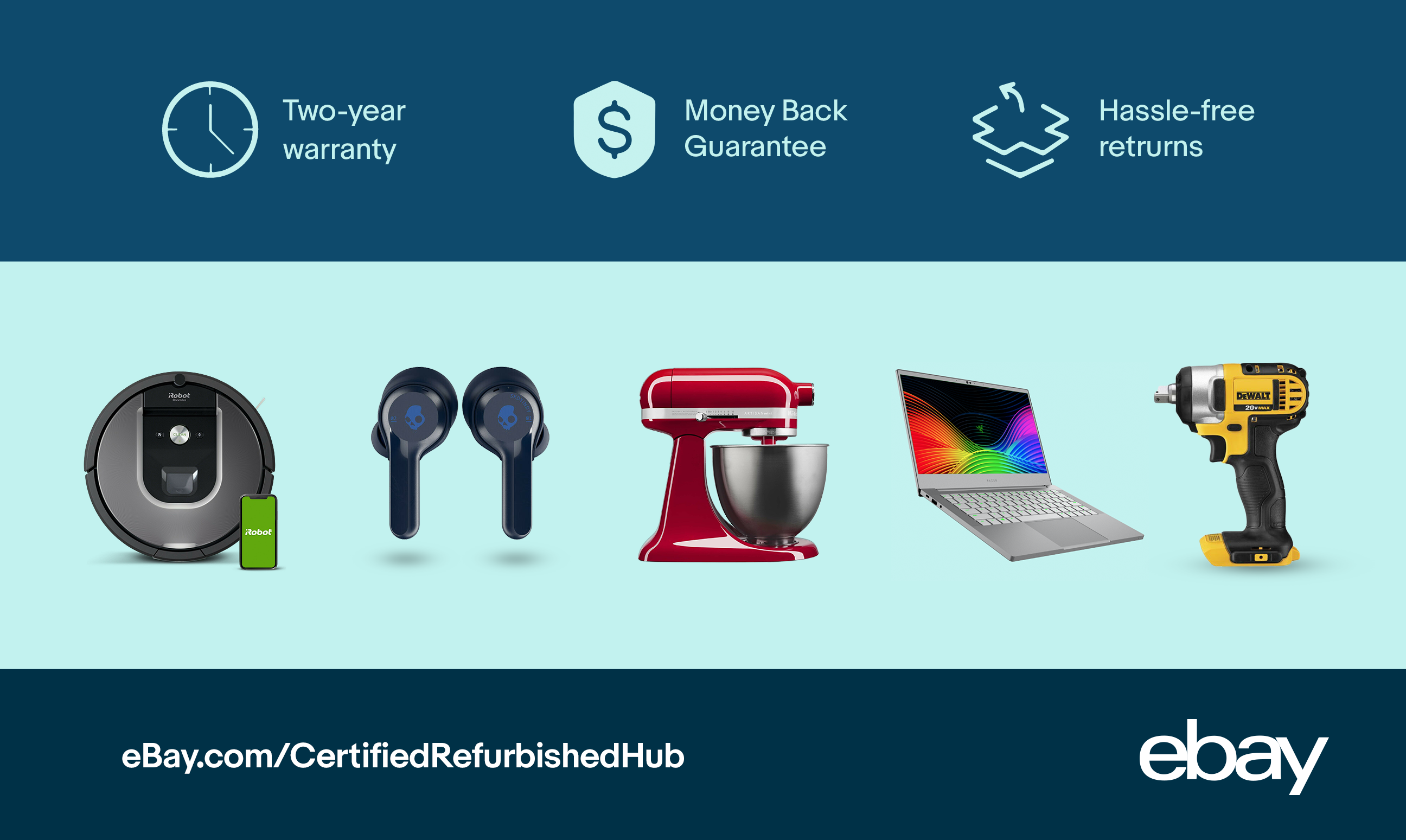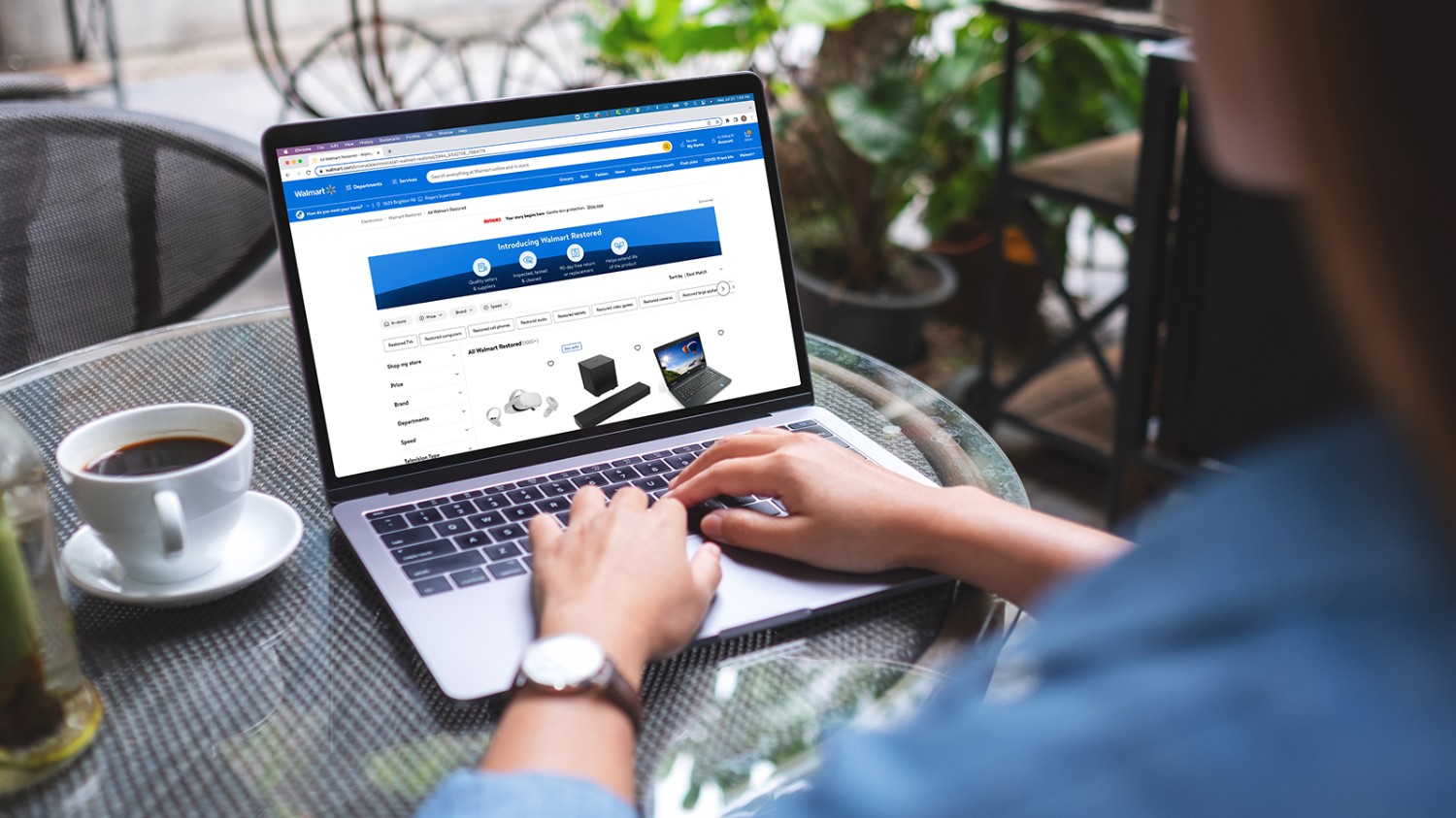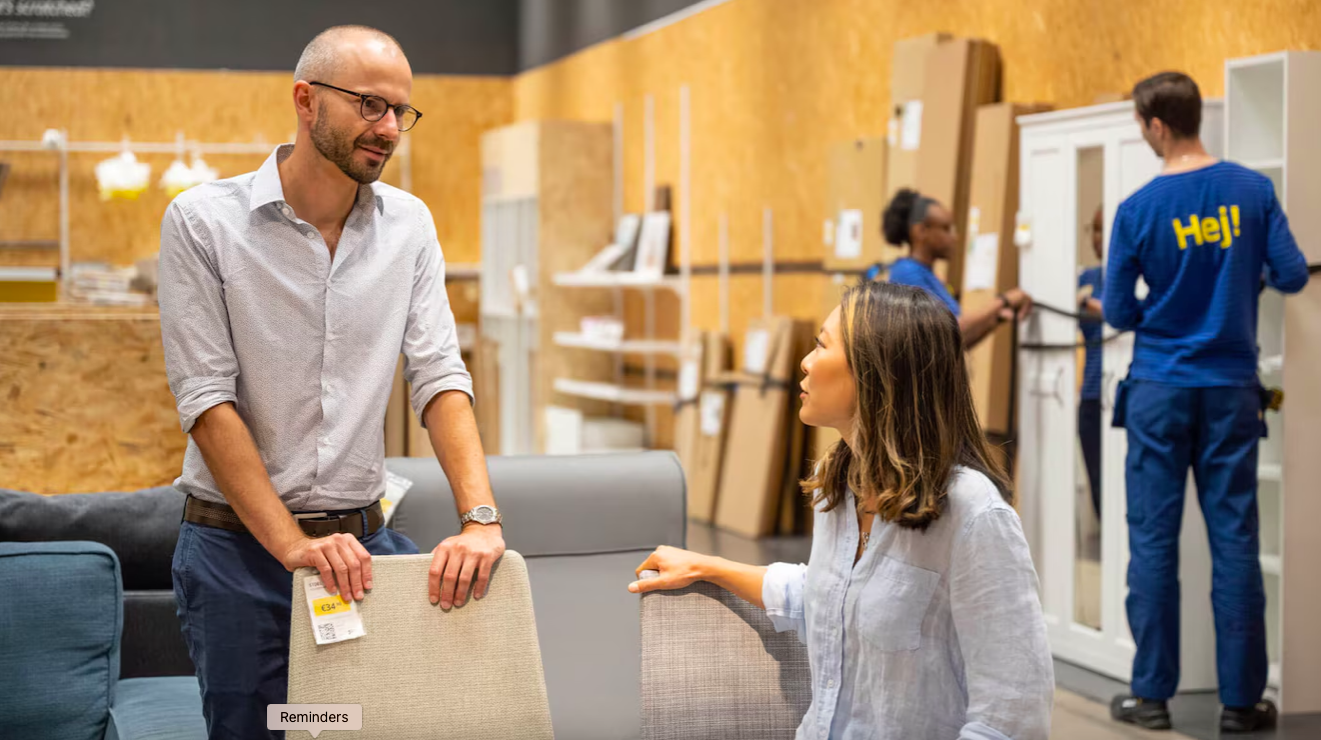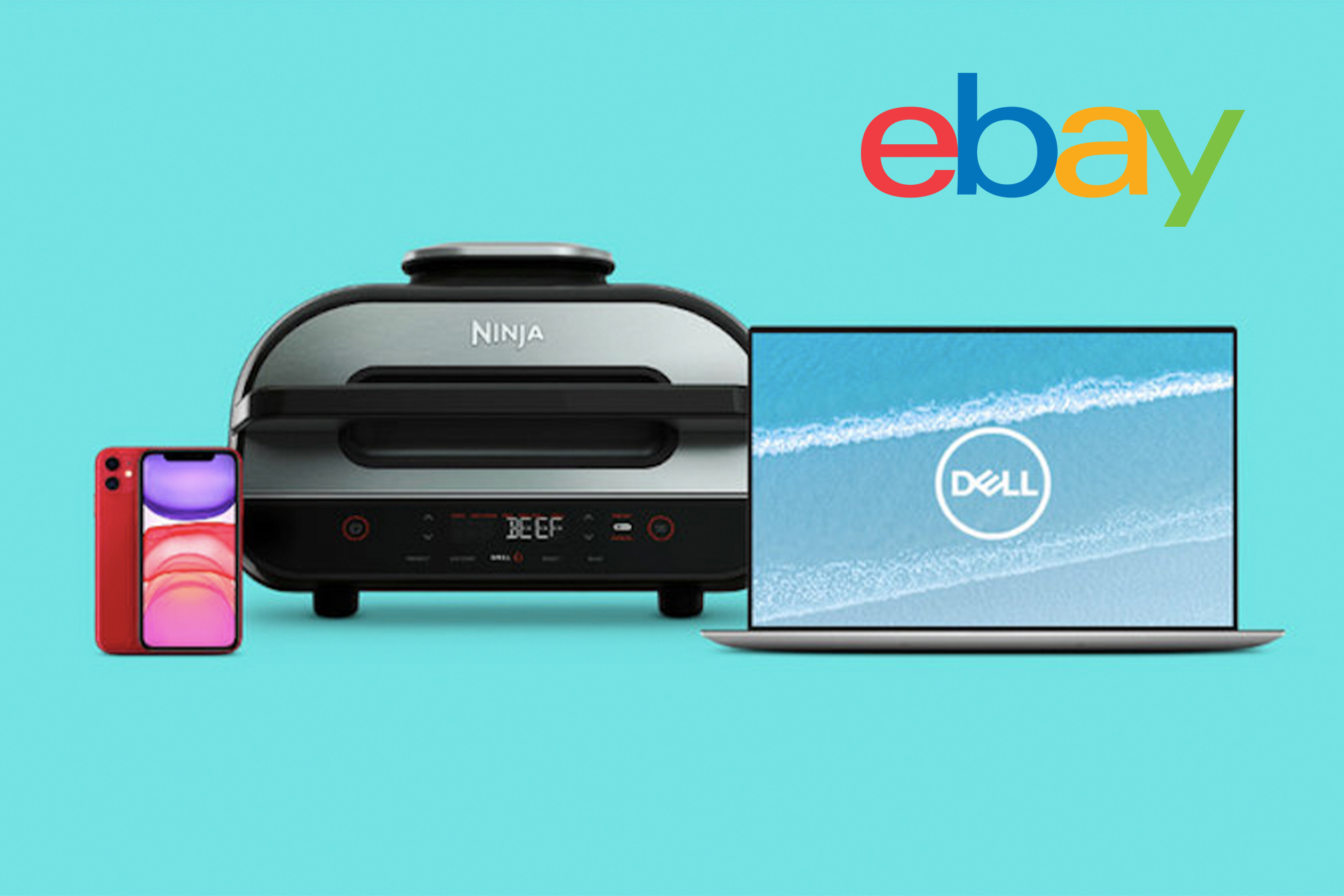Recommerce. Refurbished. Resale. Whatever you might call it, it is getting more attention and demand today. It has emerged from a niche in the retail world into a greater consideration with retailers including eBay, Poshmark, Walmart and Ikea, among others, making used products more accessible and popular.
Although selling used products is hardly new, recommerce as it evolves, is doing so with an expanding online infrastructure that doesn’t require a trip to a physical store. Recommerce is gaining because retailers are investing in the processes to make it more vibrant and attractive to consumers who might otherwise look to fast fashion or other products meant to be used and soon tossed aside. Even e-tailers in that sector, such as Shein, are expanding their recommerce operations. As such, consumers have a choice when they shop for value fashions. The growth of recommerce should provide insight into consumer commitment to sustainability in a world where fashions, including home fashions, are subject to trends that can come and go quickly.
The eBay Approach
Although sellers on its site also sell first-line goods, eBay has long been a leader in recommerce in everyday and collectible goods. On May 21, 2024, eBay touted what it christened Recommerce Day to throw a spotlight on the release of the company’s fourth annual Recommerce Report.
Recommerce Day included a takeover of the eBay homepage accompanying the release of an edition of the report the company stated took a broader look at recommerce than was the case earlier. EBay polled 28,000 people globally to prepare the report. For the Recommerce Day kickoff, it offered opportunities to learn more about resale, find deals on previously owned merchandise and participate in an eBay Live program featuring exclusively second-hand items. As part of its efforts, and in a celebrity tie-in, eBay partnered with actress and sustainability advocate Alicia Silverstone to highlight the benefits of recommerce.
In the eBay Recommerce Report survey, 59% of global consumers reported buying preowned goods during the prior 12 months. Some 70% of respondents planned to purchase resold goods this year. At 65%, consumers aged 18 to 24 were most likely to have bought preowned goods over the previous 12 months. Moreover, 21% of Gen Z consumers shopped resale products monthly during that period. Among older GenZers and younger Millennials 25 to 34, 71% of survey respondents said they had bought a preowned item within the past year. Additionally, 45% of consumers in the U.S. say they own a refurbished product.

eBay “Certified Refurbished”
Although such purchasing often is in support of sustainability, the economic motivation for recommerce actually is primary. An eBay spokesperson pointed out that 62% of respondents to the recommerce survey said the main reason to purchase previously owned products was to save money. After that, 26% of consumers cite sustainability and environmental benefits as the main reason they purchase preowned goods, followed by the decision to purchase a specific second-hand item they couldn’t find new, at 25%; buying preowned as an affordable means of purchasing certain brands, at 24%l and/or to acquire a unique or collectible item, at 18%.
Although consumers generally cite cost as their first recommerce consideration, they have different reasons for doing so. Some 50% of Gen Z shoppers in the Recommerce Report wanted to spend less on one thing so they could splurge on something else.
Although personal economics plays a big role in recommerce, for many consumers, the attractions are several, with 60% of those buying preowned goods saying that it has become more important to them. In demographic terms, 62% of Millennials said buying preowned has become more important to them, as did 66% of GenZers. When thinking about the future of recommerce, it’s worth noting that 63% of consumers in the Recommerce Report said sustainability has become more important to them when they make everyday purchase decisions. As such, the sustainability element is likely to become even more important in resale and presents an opportunity to position goods in a light that is provided, if not always the primary reason, then a critical secondary reason to purchase.
When it comes to products, 48% of consumers eBay surveyed purchased apparel, 34% bought books, 24% bought shoes, 23% bought home and garden products, and, perhaps surprisingly in fifth place, 22% purchased tech/electronics.
Ease of selling is another motivation for getting involved in recommerce. Some 64% of sellers indicated the process of moving goods has become simpler. According to eBay, 79% of global sellers got their start in recommerce on eBay.
The Recommerce Report indicated resale generates about 40% of eBay’s gross merchandise value (GMV), and the company’s second-hand business has maintained double- digit year-over-year gains.
Silverstone and celebrities are keen to associate themselves with recommerce initiatives, including those involving their own philanthropy. On June 27, in conjunction with Pride Month, Elton John opened up the closet of his legendary wardrobe, including bespoke Gucci jackets, Versace robes and customized Prada loafers. John also offered more affordable items, such as historic concert T-shirts and baseball caps, for an auction, with 100% of proceeds benefiting the Elton John AIDS Foundation. EBay dubbed the event Rocket Man Resale.
Mikhaila Amora, eBay director of U.S. general merchandise hard goods, told HomePage News the company’s recommerce business is growing “significantly,” pointing to the 40% GMV figure and the breadth of operation as the company addresses different reasons consumers choose to shop preowned products.
“Recommerce includes the buying and selling of pre-owned goods, which can span a broad range of categories including fashion, electronics, home goods and more, Amora said. “While collectibles and hobby sales can fall under the broader recommerce umbrella, they are distinct in that they often focus on items of specific interest or rarity. Recommerce, in general, emphasizes sustainability, economic value and the circular economy.”
Sellers on eBay are diverse, and they start out in business for various reasons, often because of interests that led them to initial transactions on the company’s site. In its last Small Business Report, eBay made a point of how people have transformed what were hobbies into small business. Sellers emerge as they start, “blending passion with entrepreneurial drive,” Amora said. “Over 60% of surveyed sellers identify as ‘accidental entrepreneurs,’ indicating they did not initially plan to start a business but did so through platforms like eBay. This trend showcases how buyers turn into sellers, leveraging their enthusiasm to create and grow their own enterprises.”
“Recommerce includes the buying and selling of pre-owned goods, which can span a broad range of categories including fashion, electronics, home goods and more, Amora said. “While collectibles and hobby sales can fall under the broader recommerce umbrella, they are distinct in that they often focus on items of specific interest or rarity. Recommerce, in general, emphasizes sustainability, economic value and the circular economy.
– Mikhaila Amora, eBay Director of U.S. General Merchandise Hard Goods
Amore noted certain focus categories identified by eBay, including luxury, P&A, sneakers, streetwear, and most recently, sporting goods, are important “in delivering relevant experiences to customers and remain a significant driver of underlying growth on our marketplace. Overall, focus category GMV continues to grow, outpacing the remainder of our marketplace.”
More traditional national brand vendors are establishing recommerce operations on eBay. When it comes to products such as kitchen and cleansing electrics, which have gotten more attention in the recommerce segment recently, brands involved include Cuisinart, iRobot and Dyson.
“The eBay Refurbished program inventory offers buyers a range of products categorized as Certified, Excellent, Very Good and Good.,” Amora said. “These products are fully functional and come with accurate condition descriptions, which aims to boost buyer confidence, reduce returns and increase sales. Sellers must qualify by meeting condition requirements, including a minimum 30-day return policy and free shipping. eBay Refurbished products give buyers peace of mind with a 1- or 2-year warranty included.”
Brick-and-mortar retailers also are using the eBay platform to get involved with recommerce as part of their efforts to grow their businesses.
“Many of our sellers also have brick-and-mortar stores but use eBay to reach new audiences and grow their sales,” Amora added. “In fact, according to our recent small business survey, 43% of eBay small business sellers are in rural areas or small towns. Further, 76% reported that eBay helped them sell to new markets and 64% of eBay small business sellers sold to more than three countries in the past 12 months. None of this would have been possible without the tools and support eBay provides.”
Although it’s important to recognize younger consumers tend to be more enthusiastic about previously owned goods, the appeal of recommerce crosses demographic lines, as noted in the Recommerce Report.
Marsha Everton, principal of market researcher AIMsights, maintained, “Attitude toward giving products a second or third or fourth life is more of a mindset than a generation factor. There is not only an openness to actively embracing these products, but there is also a commitment to making sure that products that you already own find a new home when you no longer need/want them.”
The expansion of recommerce got a major boost from Apple and its refurbished goods program. However, recommerce has gained as a result of consumers learning about and developing an appreciation of preowned goods, according to Chris Lubick, vice president of business development and social impact at Verdi Commerce. Verdi Commerce is a marketing organization that partners with leading brands to maximize recovery on returned, refurbished, end-of-life and excess inventory through incremental and non-disruptive sales channels, including its own, Verdi.com. Verdi is helping companies pursue circular commerce solutions in which products that might otherwise go into the waste stream have a prolonged life that will extend as long as they remain useful. Circular commerce further extends to the sustainable disposal of products when their useful lives are exhausted.
“The adoption of refurbished products is increasing in parallel with consumer awareness of their reliability and, most importantly, availability,” Lubick said. “While housewares and any electronic device above a certain value have been refurbished for decades, it was Apple’s introduction of their trade-in program in 2013 that set the foundation for mass adoption. You take one of the most well-known and respected brands in the world, which produces the most in-demand electronic product in the world and make it available for as much as 50% off without sacrificing any critical features. That’s a strong incentive, especially for younger consumers who can’t afford the new product in the first place.
“That adoption is migrating to other brands and other categories,” Lubick continued. “If I can save that much on my iPhone, why not do the same on my Cuisinart air fryer or my Shark vacuum? The environmental impact of keeping used items out of landfills serves as yet another motivation, for some even more powerful than the financial savings.”
Through it all, the basic attraction of recommerce has increased.
“While Gen Zs and Millennials may talk about it more, even Boomers are more open to buying used goods than ever before,” Lubick said.
Still, growing concern about the environment is a factor that can potentially keep momentum going in the resale market, as previously noted. Sustainability is a concern that eBay will address as it keeps on developing its recommerce program.
“As eco-conscious consumers become more deliberative about their purchases, the recommerce market is poised for solid growth,” eBay’s Amora said.
Poshmark Promotion
The addition of new support features is facilitating the growth of recommerce. Major resale platforms are coming up with new ways to make transactions easier, but they also are helping committed sellers engage potential customers more effectively.
Poshmark features influencer and social media-style interaction on its site, and it supports sellers in a variety of ways. The company has launched Promoted Closet in the United States as an easy-to-use and effective paid marketing tool. Promoted Closet helps sellers accelerate sales and drive increased engagement with their listings and complements the suite of seller tools, as Poshmark describes it. Promoted Closet is a response to seller feedback, Poshmark noted, particularly in its ability to support platform participants regardless of the size of their offering, previous experience or amount of free time. To participate in Promoted Closet, sellers just set a weekly budget and let it run. Poshmark then promotes available listings to shoppers in their search results and on brand pages. Sellers pay via their set budgets only when shoppers click on a promoted listing. Promoted Closet sellers also get listing-level data reports, including the number of impressions, clicks and sales, in addition to related insights such as return on ad spend, cost per click and click-through rate.
According to Poshmark, sellers participating in Promoted Closet have seen a 43% increase in sales and an 80% increase in listing page views.
Kelly Mason, Poshmark’s head of communications, explained the company set out to address sellers’ desire for an easy-to-use and effective premium marketing tool that could increase the visibility of assortments (“closets” in the company’s terminology), accelerate engagement with listings and help build revenues.
“Promoted Closet is unique in that it lets sellers promote their entire closet with just one click,” Mason said. “Through machine learning, Poshmark promotes the available listings in a seller’s closet to shoppers based on how closely the listings match that shopper’s search query, resulting in increased engagement and sales.”
Poshmark sees the resale sector evolving as a dynamic interplay of shopper preferences, reseller needs and emerging technology, including livestreaming and AI, all in the service of making it easier for sellers and shoppers to use the platform.
In applying technology, the company developed Posh Shows, a live shopping promotion, as another way for just about any seller to generate more sales, Mason indicated, even those who are not influencers or resellers with large followings.
“For sellers, Posh Shows allows them to build stronger relationships with their customers in a fun, interactive format,” Mason said. “For shoppers, it enables them to feel more comfortable shopping second hand by being able to interact with sellers directly, asking questions and requesting measurements.”
In addition, Poshmark has created a visual search tool that leverages AI to enhance its effectiveness. Posh Lens can apply “AI to help shoppers search on the platform using just a photo of an item. If a shopper sees a look they love in real life, they can capture or upload an image of it and easily find and shop for similar items on Poshmark,” Mason said.
Poshmark conducts promotions outside the recommerce sector as a familiar appeal to consumers and, in specific instances, as a way to get consumers thinking about purchasing for more reasons, such as gifting.
“Secondhand Sunday is one of our tentpole campaigns, designed to drive engagement on Poshmark ahead of the holiday season,” Mason said. “Celebrated annually on the Sunday after Thanksgiving, Secondhand Sunday elevates Poshmark’s resellers as the new storefronts during the holiday season and encourages shoppers to purchase their gifts secondhand on Poshmark.
“The national day takes place during the busiest shopping weekend of the year and aims to bring awareness to the social, economic and environmental benefits of secondhand shopping during a period traditionally defined by overconsumption while supporting resellers during the holiday season, she continued. “Whether or not we’re in the holiday season promoting Secondhand Sunday, our efforts are encouraging shoppers to turn to secondhand items for their gifting needs all year long.”

Poshmark Promoted Closet
As noted, resale isn’t new, but online retail created fresh opportunities for second-hand sales.
“The shift to e-commerce has made resale more accessible and more accepted,” Mason said “Platforms like Poshmark have made it more convenient for shoppers to embrace secondhand shopping. Shoppers can search for exactly what they want from the palm of their hand and find inventory from millions of closets across the country, versus sorting through racks at a thrift store or at a consignment shop.”
In updating and enhancing the platform and its approach to the consumer, Poshmark continues its efforts to expand the market for second-hand goods. Over the past couple of years, influencers have become a bigger part of building consumer interest in recommerce.
Second-hand fashion influencers have cultivated a positive perception of secondhand fashion over the past decade by offering thrifted style inspiration and showing audiences how to incorporate thrifted items,” Mason said.
She said social media can help popularize how second-hand products can help shoppers express their personal styles through “unique pieces, affordability and living a more sustainable lifestyle. “
Mason points out that Poshmark has its own social media channels it can leverage. It does so to educate and inspire its audience as it posts content from sellers and shoppers.
These days, the consumer attraction to resale is demonstrable, and it extends beyond what many perceive as its primary market and motivation for participation.
“Poshmark’s community is made up of over 130 million users who represent more than 90% of U.S. zip codes and include every demographic, from Gen Z to Baby Boomers,” Mason said. “We’ve found that many people, especially younger generations like Millennials and Gen Z, are turning to resale for three key reasons.
“One: Consumers want to make money and save money in today’s economy, and they use resale as a way to shop for trending styles at a lower price point, and also to extend the life of items in their closet. Two: Shoppers are attracted to unique finds on secondhand platforms, including archival designer and one-of-a-kind vintage pieces, helping them express their personal style. Three: Shoppers like that they are directly shopping from and supporting another person versus a large retailer.”
The Walmart Way
Walmart, two years ago, began a recommerce initiative — Walmart Restored — beginning with a heavy emphasis on consumer electronics, although the company included a fair number of appliance brands such as KitchenAid. Walmart has significantly expanded its recommerce offering through its own operations in cooperation with vendors and companies participating in its marketplace. Walmart Restored products are professionally inspected, tested and cleaned. If, for any reason, a customer isn’t satisfied, Walmart provides 90-day free returns.
A year after the initial debut, Walmart introduced a new recommerce tier: Walmart Restored Premium. Products in the premium program show no cosmetic damage and come with a one-year warranty. Where they are a product element, batteries must have a capacity of 90% or more of the new equivalent. Original manufacturers or manufacturer-authorized third parties refurbish all Restored Premium products.
Today, Walmart’s marketplace operation has become a platform to grow its recommerce efforts. According to Bob Means, senior director and category general manager for Walmart Marketplace, the Restored program continues to grow across the retailer’s operation
“We offer hundreds of thousands of Walmart Restored items on our marketplace and are continuing to expand our resale assortment to extend the life of products in additional categories like books, music, automotive and apparel,” Means said. “With the growth of the Walmart Restored program, we can reinforce sustainable shopping and the circular economy at a fantastic value for customers.”

Walmart Restored
Walmart has had abundant interest in its Restored program from marketplace sellers that have continued to expand the program with recent requests for participation in product categories running from hoverboards to hand dryers. The interest is welcome because Walmart continues to advance its recommerce and circular economy efforts. In its latest ESG reporting, which emerged about a year ago, Walmart stated its Restored program in 2022 averaged more than 100,000 product listings across approximately 300 marketplace sellers. That didn’t account for in-store refurbished electronics sections operating in more than 200 Walmart locations.
Since Walmart published its ESG report on Waste and the Circular Economy last year, the number of sellers participating in the Restored program has nearly doubled, and the company continues to receive new requests each month, Means added.
As such, the recommerce program has become more integral. Walmart has original manufacturers and other top-rated performance-managed sellers and suppliers participating in the Restored program, Means said. Walmart not only sets standards for Restored item condition but also for seller performance. Means said Walmart closely monitors the performance of Restored sellers, including quality checks, to ensure customers are satisfied with their purchases.
Means pointed out that Walmart often features Walmart Restored items in relevant site campaigns and has key touchpoints, including events, through which it connects with sellers on deal pricing for fast-moving Restored items. Walmart customers often discover and decide to buy Restored items based on the value these items provide, and the company continues evolving the search experience to present these items to customers where relevant, Means said.
Ikea Resale
Ikea has created its own resale marketplace with the company’s Buy Back & Resell program, designed as a perk for its Ikea Family free loyalty program and its Ikea Business Network.
Ikea launched Buy Back and Resell in the late summer of 2021 as part of its initiative to become a circular business by 2030. The program started as a test at Ikea’s Conshohocken, PA, store that also serves as its U.S. headquarters.
In introducing the program at the time, Jennifer Keesson, then Ikea U.S. country sustainability manager, said, “At Ikea, we are passionate about making sustainable living easy and affordable for the many, and want to be part of a future that’s better for both people and the planet. We hope the Buy Back & Resell service inspires our customers to live a more sustainable life at home while giving their used furniture another life and a second aim is to use only renewable or recycled materials by adapting and finding new sources or developing new materials and is on a journey to find circular solutions for existing and new customers to acquire, care for and pass on Ikea products.”

Ikea Buy Back & Resell
To bring back used furniture, Ikea Family and Business Network members first fill out an online form and email it to get buyback quotes and item numbers. They then bring the quotes and buyback numbers with the fully assembled furniture pieces to Ikea stores, where employees reassess the pieces and determine the final value. Ikea provides store credit for items accepted based on the final assessed value.
According to an Ikea spokesperson, the Buy Back & Resell service is offered year-round at all U.S. stores, “enabling us to help our customers prolong the life of their furniture”
Ikea offers resale items for purchase in an as-is area, “providing an even more affordable option for many people,” the spokesperson added. “We now offer as-is online, which is a service that allows Ikea (shoppers) to browse and reserve gently used products online to pick up and purchase them in-store.”





